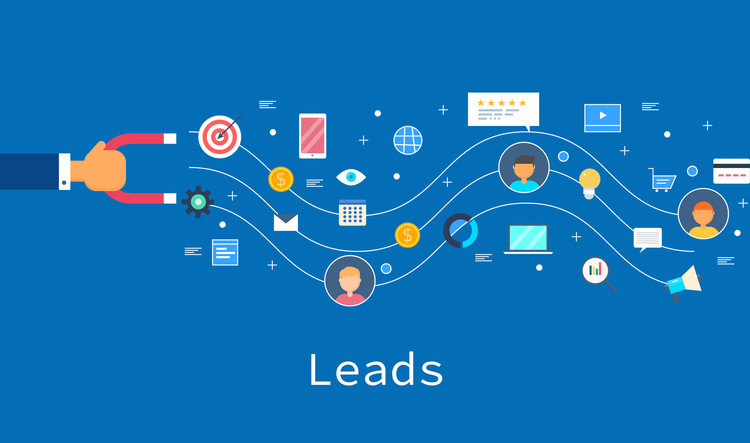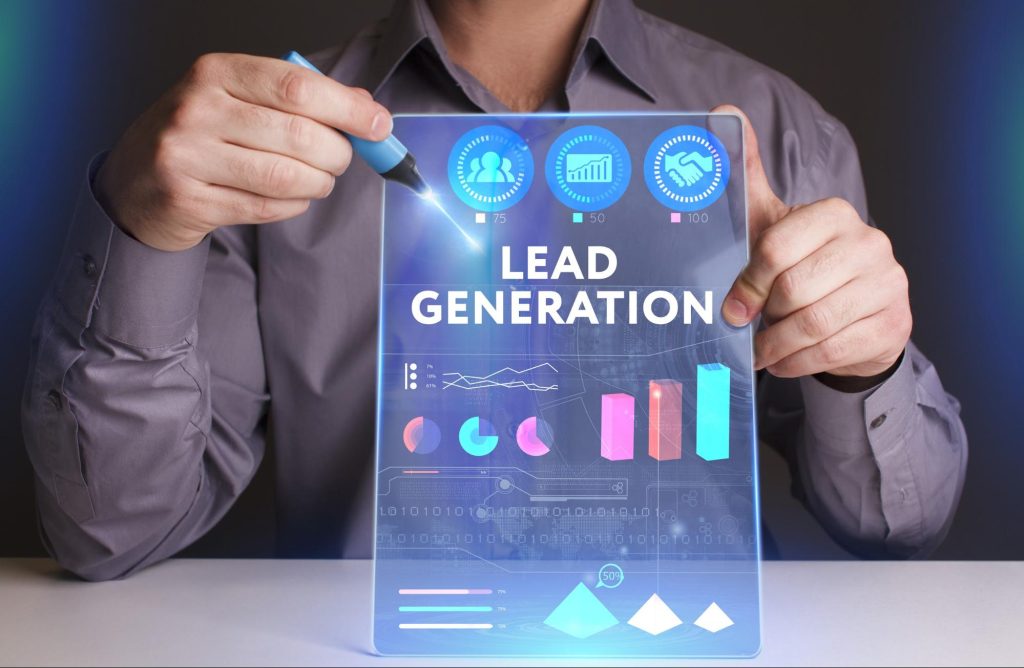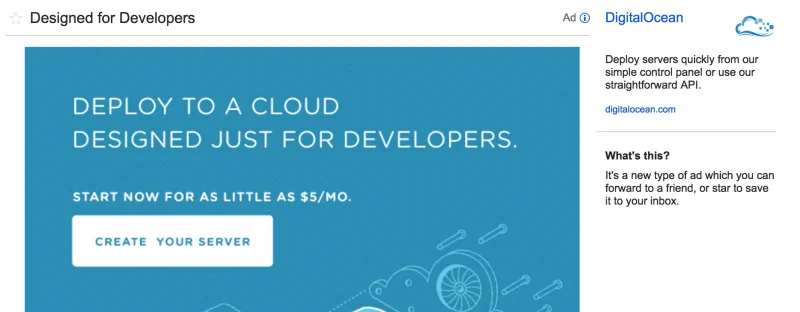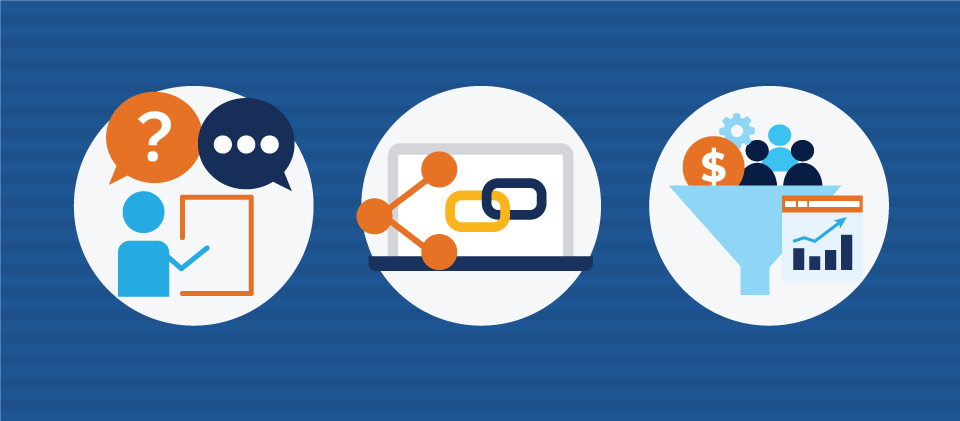What is a Lead?
Any person who expresses interest in a company’s product or services in any way, shape or form is a lead.
Leads are more likely to hear from a business after opening communication (by submitting personal data for an offer, trial or subscription… rather than getting a random cold-call from someone who bought their contact information).

Let’s suppose you complete an online survey about taking care of your car. You receive an email about how the auto company can help you care for your car a day later. The process would be much less intrusive than if the auto company called you randomly without any knowledge of your car maintenance needs. This is how it feels to be a leader.
From a business perspective, the data the auto company gathers from you through your survey responses allows them to personalize the opening communication to address your current problems. Not waste time calling leads that aren’t interested in auto services.
When a customer becomes a visitor, leads are an integral part of their lifecycle. All leads are not created equal. Different types of leads can be classified based on their qualifications and lifecycle stage.
What is Lead Generation?

The process of generating interest in a product or service by generating leads is called lead generation. This is online marketing and involves gathering visitors’ contact information via a webform.
Many B2B companies consider lead generation a key part of their sales funnel, as their products can be expensive and customers are less likely than others to purchase their product or services directly through their website. Businesses can collect leads through email marketing to educate and nurture potential customers, before reaching out directly to qualified leads via salespeople.
Ecommerce and other businesses need to generate leads. Email marketing remains one of the most efficient channels for online marketing. Gathering the contact information of potential customers allows the business to market to them later even if they don’t make a purchase right away.
How lead generation works?
The lead generation process consists of two components: getting visitors to your site and convincing them to give you their contact information.
Finding a way to attract prospects is the first step in this process. There are many options available to attract prospects to your website, depending on your company’s goals. Here are some key methods businesses use to drive traffic.
- Search Engine Marketing (SEM ) is an online advertising method that allows search engines such as Google and Bing to show ads in search results. This can be a great source of traffic, as search is the most common way that people browse the internet.
- Search Engine Optimization (SEO – ) Search engine optimization works in a similar way to SEM. However, it does not involve paying search engines for advertisements. Instead, SEO is optimizing your website for search engines so it appears higher in organic search results.
- Social Media – These social media sites, such as LinkedIn and Facebook, have become the most visited sites on the internet and are now rivaling search in terms of traffic sources. Social media can be used to drive traffic by publishing content on these platforms and/or paying for ads that run through the networks.
- Display Ads – This type of advertising can be in many forms, including video, image, or text. You can purchase these ads on relevant websites to drive traffic to your site. This is usually done via Pay-Per Click (PPC).
- Offline events – Online marketing is often started offline. Events like industry conferences or meetups are great ways to make new contacts, tell them about your brand and drive traffic to your site. These events can be attended as a guest or sponsored by you.
After visitors have arrived at your site, it is time to convert them into leads through an online form. You can use many lead generation strategies to get users interested in your product/service and get them to fill out an online form.
These are some of the most common marketing strategies that businesses use to generate leads.
- Content – Lead generation is all about providing high-quality content for exchange of contact information. You can choose from white papers, case studies, infographics, ebooks, or videos. This content is intended to attract potential customers to your target audience by providing them with relevant content and requiring them to submit their contact information before they can access the content.
- Webinars – A webinar is a live video conference that your visitors can watch and take part in. Webinars last from half an hour to one hour, and offer information and education material on a particular topic. Webinars can be interactive and require a significant investment of time. They can be a great way not only to generate leads but also to educate, and even convert them.
- Your product is the best tool for lead generation. Visitors will give their information even if you don’t offer any incentives if your product solves a significant problem. Landing pages and sales pages are a great way to present your product in the best possible light. These pages help convert potential customers and educate them. Optimizing landing pages is key to getting the best out of them.
If the lead is created, and the customer is within the target market, the lead will be a Marketing Qualified Leader (MQL). The digital marketing team will then begin nurturing the lead through marketing campaigns. This process involves marketing automation campaigns sent to targeted email lists. The content is meant to educate and persuade prospects to become sales leads.
Once a lead is nurtured, prospects can be persuaded to make an inbound sale by either visiting the website or reaching out to a representative to turn them into qualified leads. Enterprise sales often involve the sales team reaching out to the prospect in order to close the deal.
How to increase your lead generation?
You can optimize your website to drive more visitors to your site.
Content is often the key to driving leads. You can experiment with different content pieces, call-to-action placement, and lead magnets in order to find which type of content works best. This usually involves identifying key buyers and creating compelling content to generate quality leads.
The lead form is often the most important part of a conversion funnel. It is important for a business to gather as much information about a prospect as possible. However, more fields can lead to fewer form submissions. You can experiment with different lengths of forms to find the best approach for lead capture and lead information.
Optimizing a website can also be done in many other areas. This includes having a clear call to action and making it easy for users to find the information they need. It can be useful to see how leads navigate around your site by looking at the data from an analytics platform.
How to use A/B Testing to Improve Lead Generation?
There are many aspects of your website that could be improved. However, you don’t want to do it all at once. A/B Testing is the solution.
You can test different changes to your site with segments of your traffic to see if they have an impact on your conversion rates and if so, what the actual impact will be. Instead of just following your instincts, testing allows you to make data-driven changes to your website.
Optimizely allows you to easily show different versions to your visitors so you can decide which version is the most effective.
What is a Lead Generation Strategy?
A lead generation strategy is a combination of tactics to attract potential customers and convert them to leads. A lead is someone who shows interest in your brand and takes action. They may have given their contact information or implied an interest in doing business with you.
Lead generation strategies for both B2C and include four components.
- Lead capture – A method to gather information from leads. The information may include the lead’s contact information and name as well as any relevant details about them (e.g. business name, position, number employees).
- Lead magnets – An incentive to drive prospects to become new leads.
- Lead qualification – This is a process that uses lead information to determine if they are likely to buy.
- Lead segmentation – This is the process of segmenting leads according to their information, habits and activities (e.g. job title, lead magnet that attracted, pages they visited on your site).
Top lead generation strategies for your startup:
Disclaimer: Not all of these are necessary. It would be a terrible idea to try all of them. Why? Because there are no two startups alike. These seven lead generation strategies worked well for us, but they won’t work for you.
One or two of these strategies may not work for you. That’s OK. Each one should be evaluated in light of your revenue, resources, marketing goals and the competitive landscape. We believe these strategies are effective, but there is no one-size-fits-all formula for growth.
1. Make it irresistible by creating a lot of opt-in options
Webinars and live demos are just a few of the many options available. Every blog post can be turned into an opt-in webpage. You can offer recipes, PDFs of blog posts, worksheets and resource guides, as well as other content.
Make a popup of the opt-in box from the sidebar. Forcing users to make a choice. Are you willing to do this? It is easier to say no when there is no other option. Saying no is the same as saying no.
This increased conversion was tested and found to be 32%.
While you can’t force them to say yes, it’s not necessary to make it so simple for them to say no.
2. Always test, but always test in the right way
It’s great to get great advice, but it can be dangerous to assume that just because someone else used it, it will work for you. This doesn’t mean that you shouldn’t listen to great advice. However, you must test it all – and do the right thing.
Split-test where you feel you don’t have to. Sometimes results will be contradictory, which is why testing is so important. For example, in this test, you might believe that the use of “my”, “your” would have no effect.
This treatment resulted actually in 24% fewer conversions
A point of view can have a profound impact. This test showed that changing “your” to” my resulted in a 90% rise in conversions.
You should also test for immediacy, concreteness and images. Split-test your headline, button copy, background image, and buttons. You might be surprised by the results, but it will help you make better and more informed optimizations.
3. Landing pages should be clear and easy to use.
Tim shared their most-converting landing page ever; you can check it out here:
This is why it’s so powerful. Tim explained that the user doesn’t have to process a lot of information like a 3-minute video or a page of copy. It is more effective than a free report because many people feel overwhelmed by information and don’t want it any longer.
The image problems that Video lead magnets are having lately is due to the multiplicity of launches and a lack of time. This landing page was a big hit. This also helps people to see what tools others are using, and it fulfills that need.
This is something that anyone can do – plumbers, architects and dentists. This lead generation landing page is easy to set up and worth the effort.
4. Make better ads
This is something I have been saying for years and it still holds true today: most ads are just suckers. They are boring and all of them are the same. And they don’t make any sense.
These ads are worth a look:
You have no other reason than the price to choose one product over another if you are the searcher. This is what I refer to as an AdWords Jackpot. There’s an enormous opportunity to stand out from the crowd and offer something new.
Your CTR can be increased by writing better ads, which will increase your Quality Score. Find out how to write killer ads and lower your click costs.
5. Offer better deals
There is a lot of room to improve your conversion rates, even if you aren’t one of the top advertisers. The top 10% of landing page conversion rates are 3x-5x higher than the average. How does this happen?
Giving better offers is one creative approach. This is more meaningful than the usual optimizations, such as changing button color or font type, spacing, etc.
Each software company offers a free trial. Every plastic surgeon offers a complimentary consultation. What can you offer that is distinctive, compelling, and provides real value for the visitor?
The conversions were incredible! We found something that people could use, without being too pushy, and didn’t ask them to do all the tedious steps of downloading, installing and then using our software. This has been one of our most successful lead generation strategies to date.
You should consider changing your offer if your conversions are below 2%. You will only see small improvements. On average, the top 25% of advertisers achieve a conversion rate of 5.31% and the top 10% average over 11%! There is a lot of potential for growth.
6. Remarketing is a great way to get creative
Remarketing allows you to tag visitors and get in front of them while they browse the internet, checking their emails, searching Google, and even hanging out with Facebook.
This helps convert abandoners to leads. Remarketing enhances the impact of all your startup marketing activities, such as content marketing, social media, and so on. By positioning yourself in front again of your audience.
Google Display Network remarketing gives you 92% reach across the U.S. on millions of websites, videos and devices. Remarketing ads fatigue occurs at about half the rate as regular ads. Be aggressive! To get started, use our Remarketing Cheatsheet.
7. Target competitors’ customers with Gmail ads
Another tip is to generate tons of leads at the expense of your competitors.
Gmail ads can be powerful tools to get in front of your target audience.
No audience is more valuable for a SaaS startup than customers. Gmail Ads allows you to target AdWords campaigns to only reach people who have received emails from your competitors. This gives you direct access to people who use similar products.
This can be done in many ways. Target keywords that are most likely to be used by your competitors. Register for the email lists of your competitors and note any phrases or words they use often. Then, add these keywords to your target keyword list.
Targeting competitors’ domains is a better way to be precise. Here is a Gmail Ad by DigitalOcean, a cloud infrastructure provider. DigitalOcean clearly targets other cloud storage companies with domain placements. I also receive emails from them.

The ad appears as follows:

Gmail Ads allow you to reach the same audience as a search engine marketing campaign but at a fraction of the cost.
The process of attracting prospects and growing their interest through nurturing is called lead generation. It also aims to convert them into customers. You can generate leads through job applications, coupon codes, live events, blogs, coupons, online content, and blog posts.
Lead Generation Process:

Let’s now see how lead generation fits in the Inbound Marketing Methodology.
- A visitor first discovers your business via one of your marketing channels, like your website, blog, or social media page.
- After that the visitors will click on the Call-To-Action (CTA), which can be in the form of an image, button, video etc., some activity that will lead traffic to your website.
- CTA takes your audience to a particular landing page that will offer some value to the visitor in exchange for sharing their information on the website.























